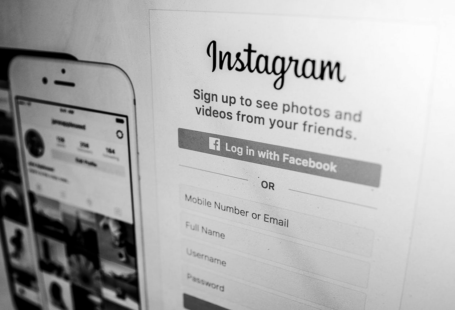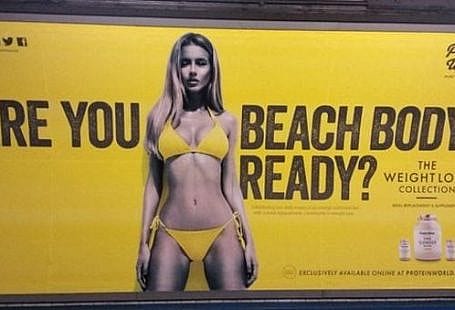Understanding how Facebook works is tough. Their algorithms are updated constantly and it’s hard to keep track of every change. However, I think it’s quite possible to formulate a couple of rules or laws by analyzing their changes through the years.
In this article, I’ll cover what makes you fall into Facebook’s good graces… and why you’re getting the cold shoulder sometimes.
The Inspiration
I’ve been following a small community called GrowthHackingIdea for quite some time. You get a daily or biweekly email in your inbox (depending if you are a VIP or free user) about case studies and experiments.
As with everything Marketing and Growth Hacking-related, most tips should be taken with a grain of salt.
However, I got really interested when they mentioned this case study from Buffer:
Here are some of the headline stats (of the results):
Reach has more than tripled from 44,000 to 150,000+ people per week on Facebook
Average daily engagements with our Facebook content has risen from ~500 to more than 1,000
More and more of our posts are reaching between 5,000–20,000 people (before we made the change, many of our posts were reaching less than 2,000 people)
It really got me wondering what kind of magic they pulled off to turn all their metrics around.
The answer, however, was quite simple:
We cut our posting frequency by more than 50% on Facebook and began to truly focus on quality over quantity.
Well, that was not very exciting… It’s what we’ve been preaching for quite some time. Most of my chat with Joah Santos, founder of NYLON. agency, was precisely about marketers saturating their social channels with content.
His words:
You won’t increase brand sentiment if you are posting 45 updates on social media per month. Top brands people love like Nike and McDonalds are posting 3 times a month. It is highly unlikely that you are interesting enough to interrupt me 45 times. Worry about #brandlove not GRPs, CPMs, TOMs, and Engagement KPIs.
It seems, however, that Joah was underestimating the social media landscape since Buffer was posting 40 times… per week. And that’s just on Facebook:
A quick sift through our data shows that we were sharing more than 125 postsacross our social media channels (25–40 posts to Facebook alone) on a weekly basis.
And the results for this hectic behavior:
The more we posted to Facebook the less reach we received on each one of our posts. This graph shows the significant drop in reach during our peak posting times (~4 times per day around July/August, 2016):

The Laws of Facebook’s News Feed
With these numbers getting thrown around (and all the bad news about organic reach shrinking), I’ve got enough information to make some valuable predictions:
1. Don’t Divert Traffic from Facebook
This seems to be the big deal for quite some time and the cause of lost traffic and engagement for publishers and brands: link posts are penalized with less organic reach than other kinds of posts. They are especially important for businesses that require users to visit their website for monetization purposes.
It’s a simple rule to remember: If you try to make users leave Facebook, you’ll get hit with a stick. For example, a post with a video hosted on Facebook has 2 times more organic reach than the same video hosted on Youtube (or other third-party platform).

That’s because Facebook wants to be the Internet’s walled garden. It’s absorbing more and more services to discourage people from leaving its boundaries. A clear case where that’s happening is with Instant Articles, which allows users to read news directly on the Facebook mobile app.
By the way, have you noticed how many times you’ve been using the mobile Facebook app as an Internet browser instead of Chrome, Safari or Firefox? Yep, that’s part of this strategy too.
This trend is getting stronger: Facebook is making its properties more connected by allowing people to share Instagram Stories on Facebook and companies to do customer support through WhatsApp. As such, I wouldn’t be surprised if they launched or bought an email service in the near future. It’s also the reason they are investing in drones to give everyone free Internet.
With this I’m not saying that you shouldn’t try to get traffic from Facebook… just expect to invest some money or be prepared to face an uphill battle.
2. Don’t be Annoying
As we could see in Buffer’s case study, over-posting is the easiest way to shoot yourself in the foot.
However, how do you know that you’re posting more than you should?
It’s a tricky question because it actually has to do more with quality than with quantity.
If you post a lot, but all your posts spark a lot of engagement and views, then Facebook will consider your page a positive agent on their platform.
If most of your posts have little to no interactions, then the algorithm will consider you an annoyance and give you less prime time on the news feed.
Ask yourself this: are all my posts providing value for Facebook users? If not, then you should consider posting less and better.
3. Time is Money
When it comes to reach, Facebook has evolved quite a bit in the last couple of years.
First, they championed images.
Images > Links
Then, videos were added.
Videos > Images > Links
Now, live video is king.
Live Video > Videos > Images > Links
What’s the trend here? Facebook gives more emphasis to formats that make users spend more time on their platform. It’s as simple as that.
The more time you spend on Facebook, the more ads they can serve and the more money they make.
Anything that helps reach that goal is promoted, anything that threatens it gets smacked.
Links send users to non-Facebook territory, so they break rule number one.
A cool image can make you stop scrolling for a couple of seconds, so they get a little boost for that.
Videos, however, can be quite long. You spent 2 minutes watching a dog chasing its tail? Jackpot.
But with Live Video… the sky’s the limit. If you start watching and get hooked, there’s no way to know how much time they will last. You can easily spend 30+ minutes there.
Just imagine how valuable this is for Facebook: even if you’re not being served ads (well, not for long…), you’re not giving money to anybody else. You’re their user. They “own” your attention. And that’s why Live Video is so blatantly favored.
When we think about this, pouring billions into Virtual Reality starts to make sense: It could be their next “Live Video”.
What to do next?
So, what’s the best way to get the most of Facebook?
1. Don’t divert traffic from Facebook
Use link posts sparingly and only when you are confident that it will be a social “hit”. Check how much shares people are generating on your website before committing to publishing it on Facebook. Alternatively, post it first on a social network that it’s either less crowded with content or not reliant on a super-picky algorithm to see how it performs.
2. Don’t be Annoying
Always benchmark your posts’ performance to understand if you are posting too much. If reach suffers while you increase posting frequency, then you’re doing something wrong.
3. Time is Money
Diversify the types of posts you use.
Be mindful of Facebook’s priorities: Live Video > Videos > Images > Links
Experiment with several types of content to see what provides the better cost/benefit for your business.
Conclusion
Of course, these rules will only be useful if they make sense not just when we consider past changes, but also if future updates don’t “break” them.
To make sure my predictions are a hit or miss (and to have a sound social media strategy), you must be aware of changes to Facebook’s News Feed (and other social networks).
You definitively don’t want to be on the losing team.
Interested in knowing more about Dark Social & Analytics?
[su_button url="https://getsocial.io" target="_blank" style="flat" background="#21D2B5" color="#ffffff" size="7" wide="no" center="yes" radius="auto" icon="" icon_color="#FFFFFF" text_shadow="none" desc="" onclick="" rel="" title="" id="" class=""]SIGN UP FOR FREE[/su_button]





